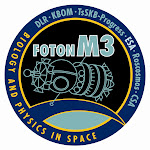Wednesday, September 26, 2007
Tardigrades are back on Earth!
This morning, at 9:58 CEST (Central European Summer Time), the FOTON-M3 capsule carrying the TARDIS hardware landed as expected in Kazakhstan, near the Russian border. Apparently, everything went as planned, and I hope this goes also for the TARDIS. More about this latest news from ESA can be read at http://www.esa.int/esaCP/SEMFVO6H07F_index_0.html. The launch of the rocket carrying the FOTON capsule can now also be viewed at http://www.esa.int/esaHS/SEMVIOK5P6F_research_0.html.
Wednesday, September 19, 2007
View the satellite carrying TARDIS on the web!
Today I learned that the position of the FOTON-M3 satellite can actually be viewed in real time.
So if you happens to be at a location where it passes during the night, and if the sky is clear, don't miss the opportunity to see the satellite carrying the first tardinauts in history!
LINK REMOVED.
So if you happens to be at a location where it passes during the night, and if the sky is clear, don't miss the opportunity to see the satellite carrying the first tardinauts in history!
LINK REMOVED.
Monday, September 17, 2007
Tardigrades in orbit!

Last Friday, the FOTON-M3 satelite was successfully sent into orbit, and the Biopan-6 platform was opened, exposing tardigrades of the TARDIS experiment to open space. The satelite will now orbit the earth at a 90 min. interval until 26 September, when the FOTON capsule hopefully lands in an area near the Kazakhstan-Russian border. Read more about the FOTON-M3 mission at http://www.esa.int/esaCP/SEMQDB13J6F_index_0.html
While waiting for the tardigrades to complete their trip in space, you may want to find out some more about tardigrades. Here are some great sites on the web:
Tardigrade Newsletter
Martin Mach's Monthly Journal on Tardigrada
Goldstein Lab
Tardigrade Newsletter
Martin Mach's Monthly Journal on Tardigrada
Goldstein Lab
Friday, September 7, 2007
Tardigrade samples delivered to ESA for integration into Biopan-6!

Yesterday, 6 September, the TARDIS hardware with samples were delivered to the European Space Research and Technology Centre (ESTEC) south of Amsterdam. Integration of all scientific hardware are now taking place.
One week from now, on 14 September, the first tardigrades in history will experience real space conditions.
One week from now, on 14 September, the first tardigrades in history will experience real space conditions.
Subscribe to:
Comments (Atom)

